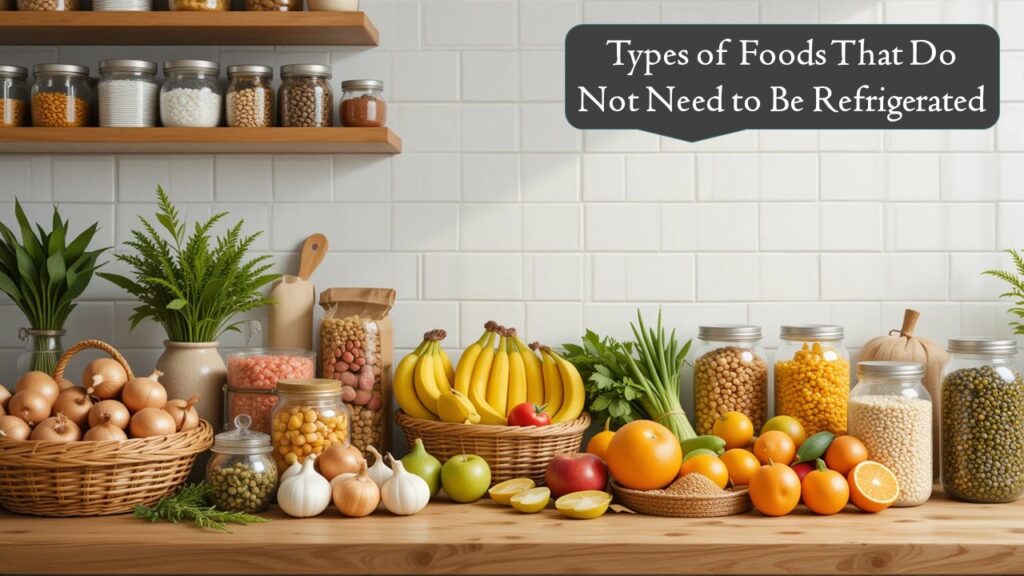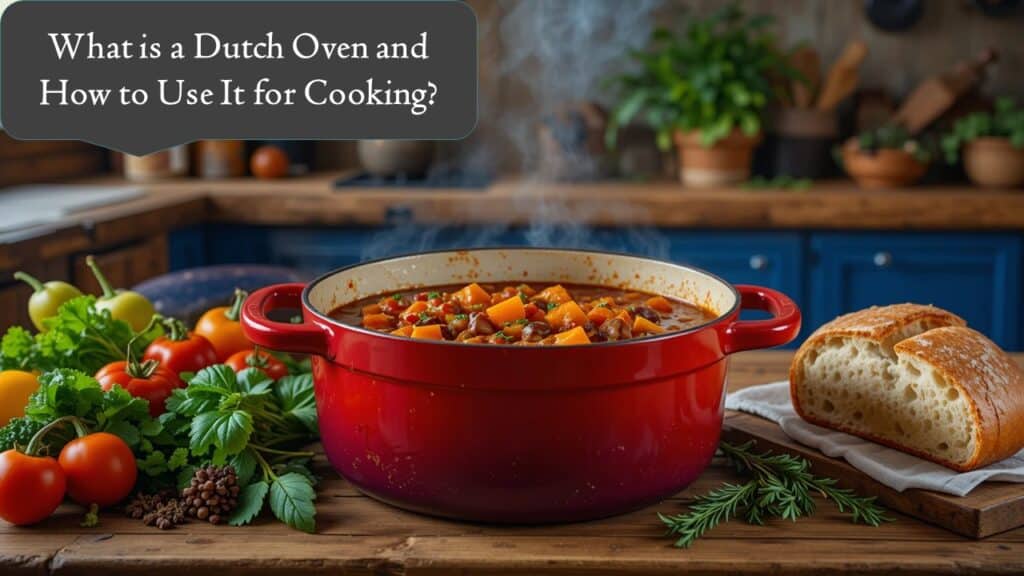When it comes to food storage, many people assume that refrigeration is the safest option for everything. However, not all foods thrive in cold environments. Some foods actually last longer and maintain better flavor, texture, and nutritional value when stored at room temperature. Refrigeration can sometimes speed up spoilage, cause changes in taste, or make certain items lose their natural freshness.
In this guide, we’ll explore common types of foods that don’t need refrigeration, why they’re best stored at room temperature, and how to store them properly for maximum freshness.
-
Fresh Produce That Prefers Room Temperature
Not all fruits and vegetables belong in the fridge. Some varieties lose their flavor, develop mealy textures, or ripen too slowly in cold storage.
Examples:
- Tomatoes: Cold temperatures can make tomatoes grainy and bland. Keep them on a countertop until fully ripe, and then use within a few days.
- Onions and Garlic: These vegetables prefer cool, dry, well-ventilated places. Storing them in the fridge can lead to sprouting or mold.
- Potatoes and Sweet Potatoes: Refrigeration converts their starches to sugar, altering taste and texture. Keep them in a dark pantry.
- Avocados: Store at room temperature until they ripen. Once ripe, they can be refrigerated for a short time if necessary.
- Bananas: The cold temperature of a fridge can turn banana skins brown and stop them from ripening naturally.
Storage Tip: Keep these vegetables in mesh bags, baskets, or open bowls in a cool, dry pantry to allow airflow.
-
Bread and Baked Goods
Many people store bread in the fridge to keep it from molding, but refrigeration actually makes bread go stale faster.
- Bread: Store in a bread box or airtight container at room temperature. If you won’t finish it in a few days, freezing is a better option than refrigeration.
- Pastries and Muffins: Keep these baked goods in an airtight container on the counter to maintain their soft texture.
Storage Tip: Wrap bread in a clean kitchen towel or paper bag for best freshness, and freeze slices you won’t eat within a few days.
-
Oils and Condiments
Most oils and condiments are shelf-stable and don’t need to take up fridge space.
- Olive Oil, Coconut Oil, and Vegetable Oils: These stay fresh in a dark, cool pantry. Refrigeration can make some oils cloudy and solid.
- Honey: Naturally antibacterial, honey never spoils and should always be stored at room temperature. Refrigeration causes it to crystallize.
- Soy Sauce, Vinegar, and Hot Sauce: The salt or acidity in these condiments acts as a natural preservative, keeping them safe on your countertop or in a cupboard.
Storage Tip: Always keep oils and sauces tightly sealed and away from direct sunlight to prevent oxidation and spoilage.
-
Coffee and Tea
Refrigeration isn’t ideal for coffee or tea because it introduces moisture and absorbs odors from other foods.
- Coffee Beans and Grounds: Store in an airtight container in a cool, dark place. Freezing is okay for long-term storage, but daily-use coffee should stay at room temperature.
- Tea Bags and Loose Tea: Keep tea in airtight containers to protect against moisture and preserve flavor.
Storage Tip: Use opaque containers to prevent light exposure, which can cause coffee and tea to lose their aroma.
-
Nut Butters and Jams
Some spreads are perfectly fine in your pantry.
- Peanut Butter and Other Nut Butters: Unless labeled “natural” or “requires refrigeration,” most store-bought nut butters can sit at room temperature.
- Jam and Jelly: Unopened jars are shelf-stable. After opening, most jams can remain out for a few days, but refrigeration is recommended for longer storage.
Storage Tip: Always check labels for manufacturer recommendations, as some natural products may lack preservatives.
-
Spices and Seasonings
Dried spices and seasonings have no need for refrigeration.
- Dried Herbs and Spices: They’re best stored in airtight containers away from heat and light to preserve potency.
- Salt, Pepper, and Seasoning Mixes: Completely shelf-stable.
- Baking Ingredients: Items like flour, sugar, baking soda, and baking powder should be stored in airtight containers in a cool, dry place.
Storage Tip: Replace spices every 1–3 years, as they lose flavor over time even when stored correctly.
-
Canned and Sealed Goods
Canned and vacuum-sealed foods are designed to be shelf-stable.
- Canned Vegetables, Fruits, and Soups: These items are perfectly safe in your pantry until opened.
- Sealed Snacks and Packaged Goods: Crackers, chips, and cereal are best stored in sealed containers at room temperature to avoid staleness.
Storage Tip: Always check expiration dates and rotate stock to use older items first.
-
Hard Cheeses and Certain Dairy Products
Surprisingly, some dairy products are okay without refrigeration for short periods.
- Hard Cheeses (like Parmesan or Pecorino Romano): These cheeses have low moisture content and can last at room temperature for days.
- Butter: Salted butter can sit out for a few days without spoiling, as salt acts as a preservative.
Storage Tip: Keep butter in a covered butter dish and away from direct sunlight.
-
Root Vegetables and Squash
Root vegetables and squash varieties thrive in a cool, dry pantry, not a fridge.
- Carrots, Beets, and Radishes: Store in breathable bags or baskets in a dark pantry.
- Winter Squash and Pumpkins: Last weeks or months at room temperature when stored properly.
-
Shelf-Stable Packaged Foods
Many packaged foods don’t need refrigeration until they’re opened.
- Pasta and Rice: Safe in a sealed container at room temperature.
- Canned Tuna and Salmon: Shelf-stable until opened.
- Powdered Milk: Great for long-term pantry storage.
Why Some Foods Shouldn’t Be Refrigerated?
- Texture Preservation: Refrigeration can make foods like bread and tomatoes mealy or hard.
- Flavor Retention: Cold storage dulls flavors in coffee, onions, and garlic.
- Moisture Control: Refrigerators create a humid environment, which can promote sprouting or mold in certain vegetables.
- Nutritional Value: Some produce loses nutrients faster in cold temperatures.
Quick Tips for Safe Room-Temperature Food Storage
- Keep your pantry cool, dark, and dry.
- Use airtight containers to keep moisture and pests out.
- Check expiration dates regularly and rotate items.
- Follow label instructions for foods with preservatives or specific storage needs.
Final Thoughts:
Not every food belongs in the fridge. In fact, storing certain foods at room temperature can extend their shelf life, maintain flavor, and free up fridge space. Items like tomatoes, onions, bread, oils, spices, and many canned goods thrive in a cool pantry rather than the cold environment of a refrigerator.
Understanding the best storage method for different foods helps reduce waste, save money, and keep your kitchen organized. By knowing which foods are shelf-stable and which require refrigeration, you can enjoy fresher, better-tasting meals while making the most of your storage space.







